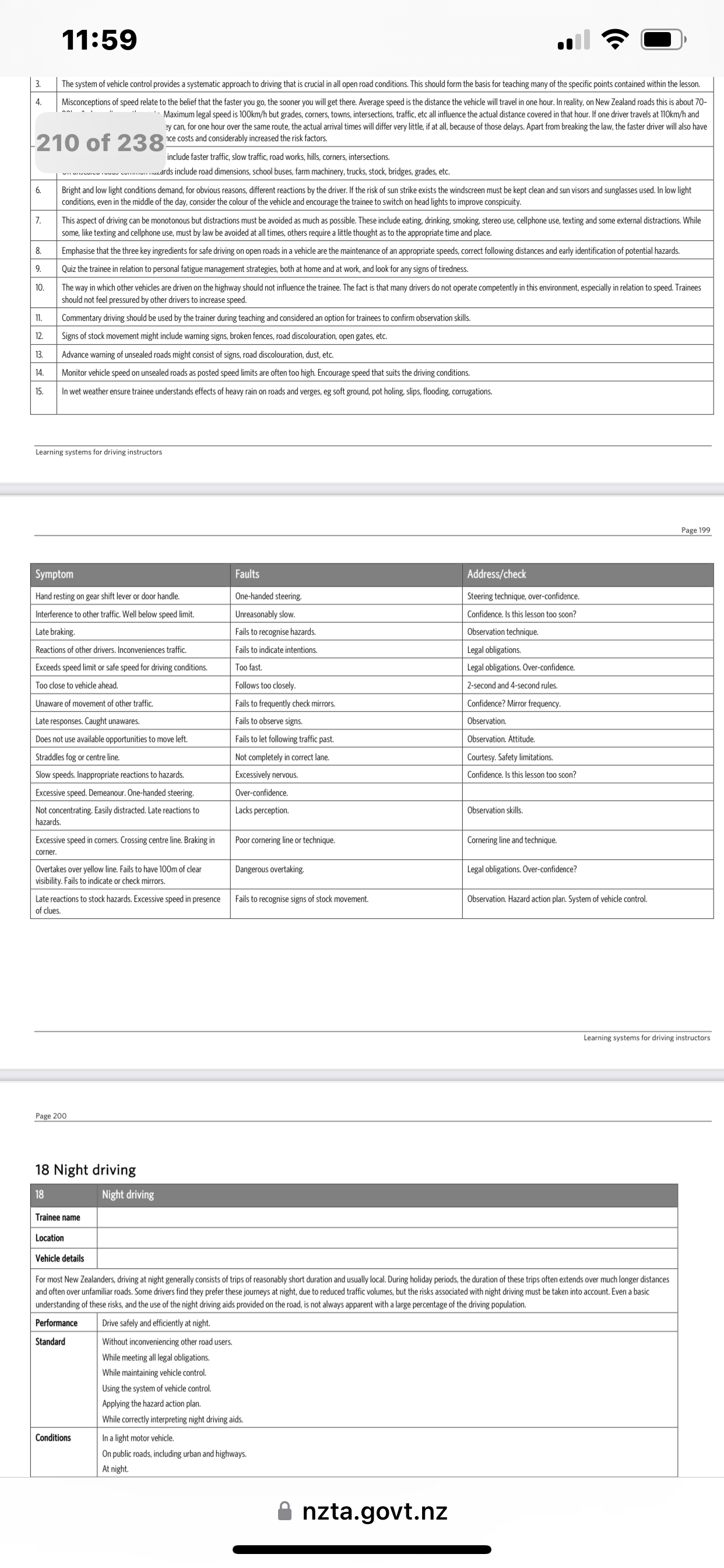Sharing the road with horses: Why aren’t we taught how?
Blog by Darren Cottingham - founder of Driver Training.
Just over 50% of people in New Zealand live in one of the seven major cities. The chance of coming across a horse on the road in the city is fairly slim - in my 30+ years of living here, it’s only happened once for me (on Waiheke Island which, while technically part of Auckland, is an anomaly). However, when I have driven out of Auckland, it has happened more times.
Are we preparing our drivers in cities for dealing with horses on the road? Are we taught much about sharing the road with horses when we learn to drive? Probably not. What does the current learning-to-drive regime contain about horses?
The Road Code
The Road Code has the basics about it on page 169, covering general courtesy, speed and passing distance, passing a horse at night and the implications of driving inconsiderately around horses (i.e. being charged with careless or dangerous driving).
The Learning System for Driving Instructors (LSFDI)
The LSFDI (Learning Systems for Driving Instructors) is a publication that driving instructors use to help them teach students to drive. It has sample lesson plans. There’s nothing in the two lesson plans (17 rural/open road driving and 18 night driving) which would be most relevant to talk about horses on the road. Lesson 17 mentions stock on the road; perhaps horses are to be included in this as a ‘catch-all’.
Driving instructors can change or augment these lesson plans (they’re a starting point), but horses are easily spooked, so driving awareness of this would be an important point. Examples of the plans below';
Learner Licence Test
The questions you get asked for in the learner licence test have nothing related to horses. This test is used both for new drivers who might take driving lessons, but also for drivers who have moved to New Zealand from overseas who are required to take a theory test to convert their overseas licence.
What about other experience driving?
We mentioned overseas drivers, many of whom will have experienced horses and other animals on the road. I’ve had the pleasure of driving in a variety of countries (UK, Australia, Italy, Iceland, Fiji, etc) and one thing prey animals have in common is running in the wrong direction, often down the road as they try to escape. The issue with a horse is it has the potential to throw the rider into the path of other vehicles.
Whether a driver has experienced horses on the road, or been taught about it, though, is uncertain; those moving from crowded cities may never have driven around large animals.
So, what could (or should) be done about this?
NZTA has produced some social media content, and occasionally there is other media visibility for the challenges of driving around horses (not including the unfortunate cases when a rider is killed or injured and it’s in the news). There should be more variants of this message.
Any information and training material should follow best practices from industry experts.
Driving instructors should include information about driving around horses in their lesson plans (albeit we have to acknowledge that not all learners use a driving instructor).
Legislation should ensure that penalties are appropriate for driving inconsiderately around horses.
Horse riders must also take the responsibility to understand the driver’s point of view so that they are not inadvertently putting themselves at more risk than is necessary, for example, by clearly signalling intentions, wearing appropriate hi-vis, etc.
Driver Training has added a How to Pass a Horse quiz to their website to help educate learner drivers.
Riders need to do their bit too to be seen & safe.
Wear hi-vis gear and use the international hand signals. PWASNZ website is full of resources to empower riders.
Ultimately, we’re dealing with an animal controlled by a fallible human; there’s no way to create zero risk if horses share the road with vehicles. However, we can create risk that is just extremely low by ensuring that the right training and information is available to drivers of all ages and abilities.
Darren Cottingham is a driver trainer who founded DT Driver Training (now part of TR Group).
Driver Training Supports PWASNZ
“We can create risk that is extremely low by ensuring that the right training and information is available to drivers of all ages and abilities. DT Driver Training (now part of TR Group) supports the Pass Wide and Slow New Zealand and the awareness it is raising in community.”
The end.
PWSANZ lead Julia McLean immediately takes actions when she learnt that “There’s nothing in the two lesson plans (17 rural/open road driving and 18 night driving) which would be most relevant to talk about horses on the road. Lesson 17 mentions stock on the road; perhaps horses are to be included in this as a ‘catch-all’.”
PWASNZ REACHES OUT TO NZTA
PWASNZ has connected with the regulatory arm of Waka Kotahi - NZTA and given specific feedback around passing a horse and rider on the road for lesson plan 17 - Open and Rural roads. Here is the email from NZTA.
We look forward to sharing more advice with Waka Kotahi /NZTA about how education can be improved. We will share any updates here on the PWASNZ blog.







